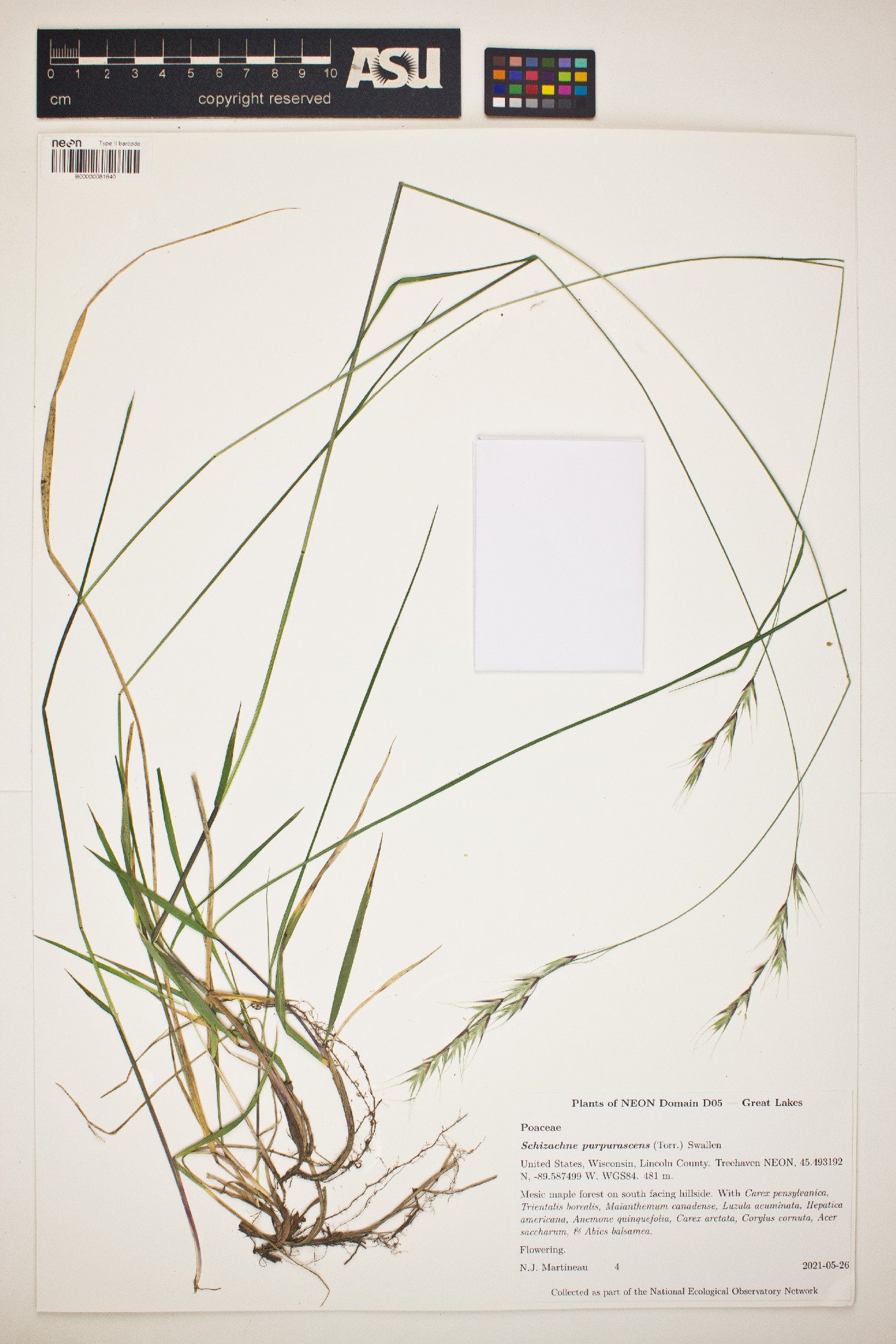- Home
- Search
- Images
- Datasets
- Sample Use
- How to Cite
- Additional Information
- About NEON
- NEON Data Portal
- ASU Biocollections
- About Symbiota
|
Family: Poaceae |
Plants perennial; loosely cespitose. Culms 30-110 cm, glabrous, often decumbent at the base; nodes glabrous, becoming dark. Sheaths closed almost to the top; ligules membranous, margins often united in front; blades folded or loosely involute, glabrous or pilose. Inflorescences panicles or racemes, with 4-20 spikelets; branches straight and appressed to lax and drooping. Spikelets slightly laterally compressed, with 3-6 florets; disarticulation above the glumes and beneath the florets. Glumes exceeded by the lowest lemma in each spikelet, chartaceous, often anthocyanic below, the upper 1/3 hyaline; calluses rounded, with hairs; lemmas chartaceous, slightly scabrous, 7-9-veined, veins parallel, conspicuous, apices scarious, bifid, awned from below the teeth, awns 8-15 mm, divergent or slightly geniculate; paleas shorter than the lemmas, 2-veined, veins ciliate, keeled; lodicules truncate; anthers 3; ovaries glabrous. Caryopses 3.2-3.8 mm, smooth, shiny, falling free of the lemma and palea. x = 10. Name from the Greek schizo, 'split', and achne, 'chaff', alluding to the split (bifid) lemma. Spikelets 3-5-fld, disarticulating above the glumes and between the lemmas; glumes membranous, 1-5-veined; lemmas narrow, rounded on the back, 5-7- veined, bifid at the tip, with an awn between the teeth, densely short-bearded on the callus; uppermost lemma similar but much smaller and sterile; slender, loosely tufted perennial grasses with flat lvs and ample panicles. Monotypic. Gleason, Henry A. & Cronquist, Arthur J. 1991. Manual of vascular plants of northeastern United States and adjacent Canada. lxxv + 910 pp. ©The New York Botanical Garden. All rights reserved. Used by permission. |


